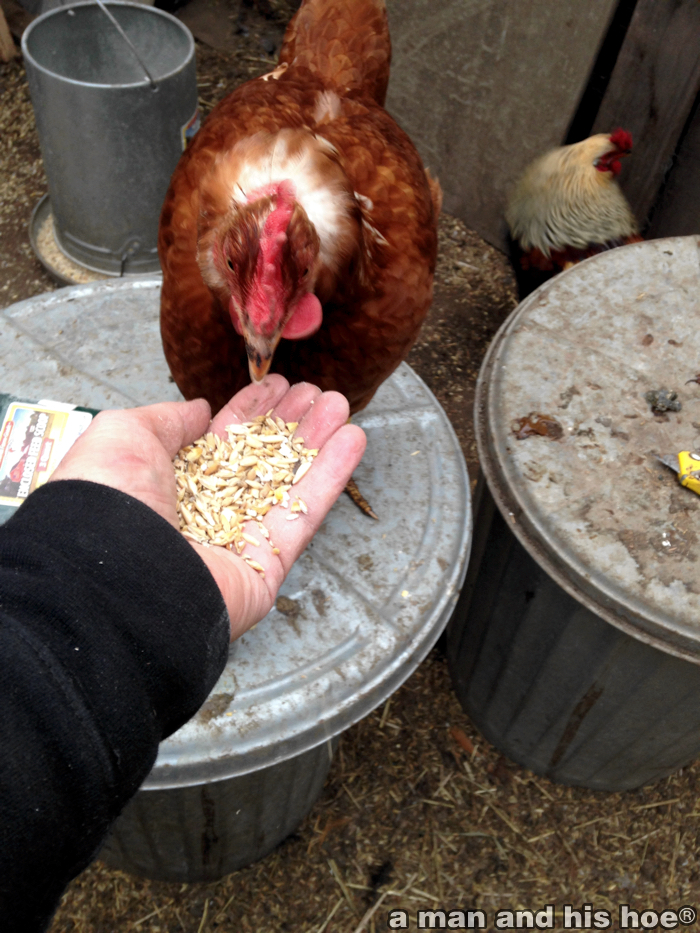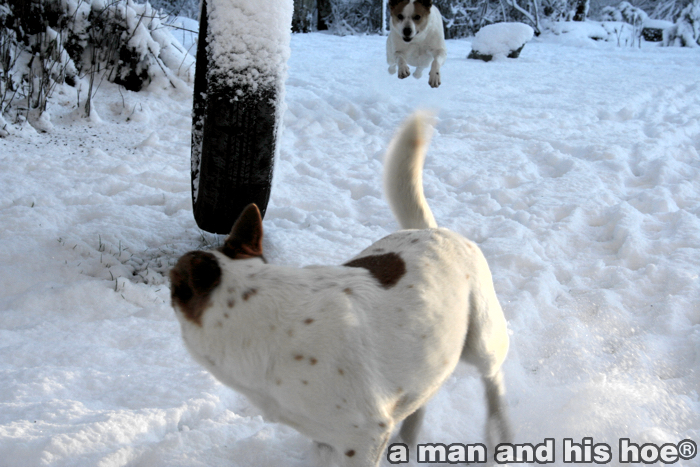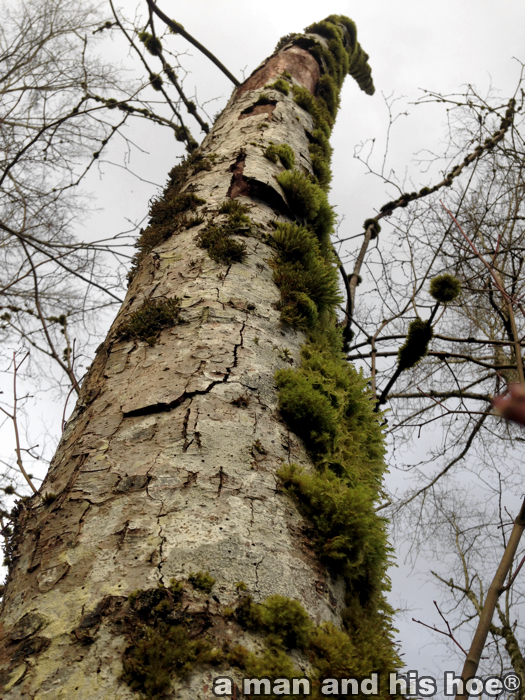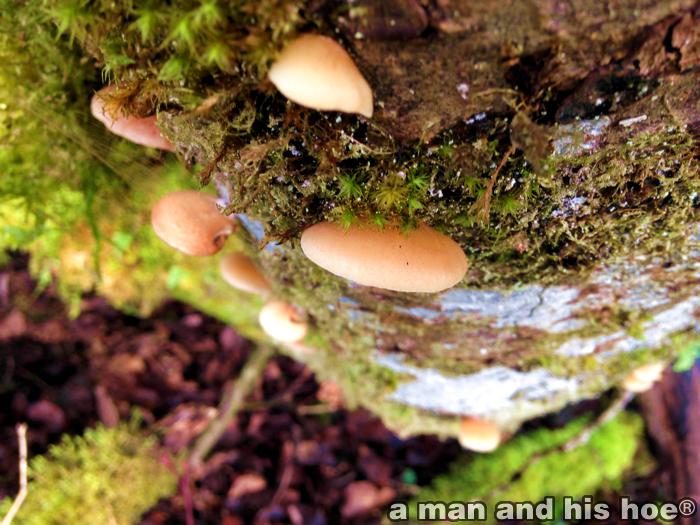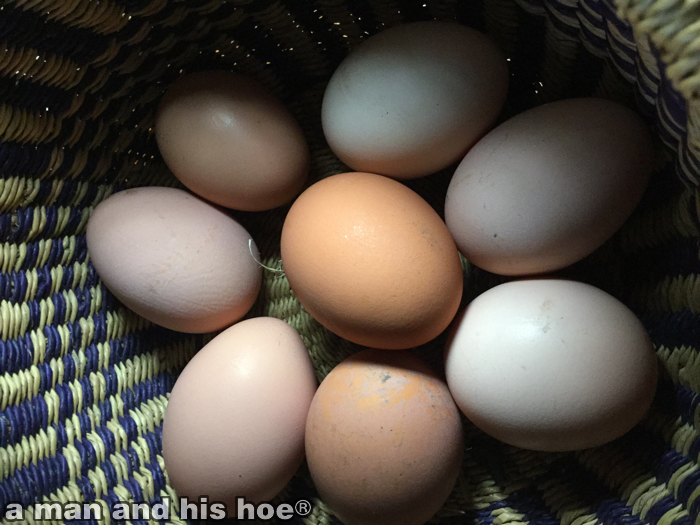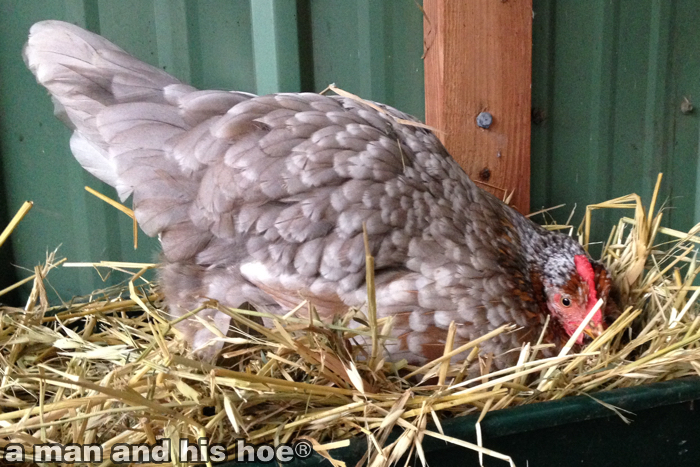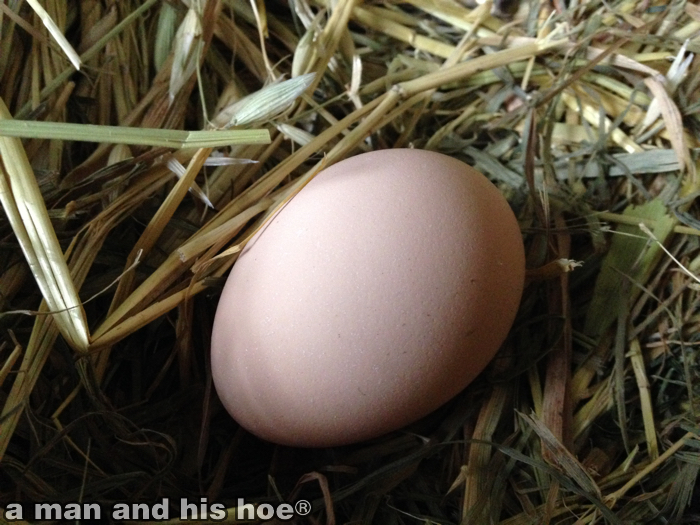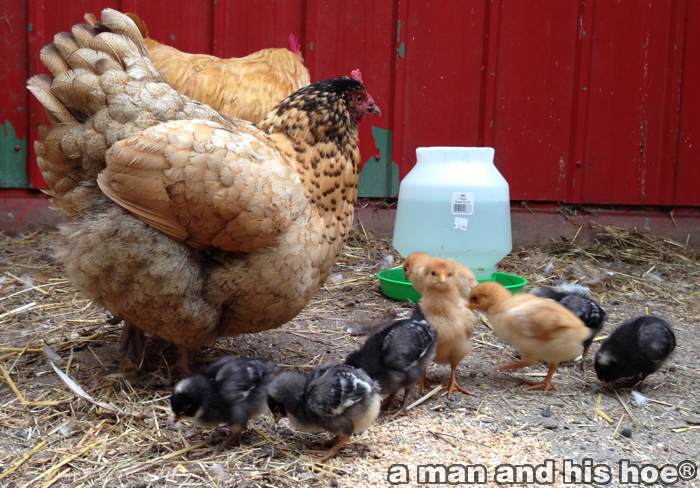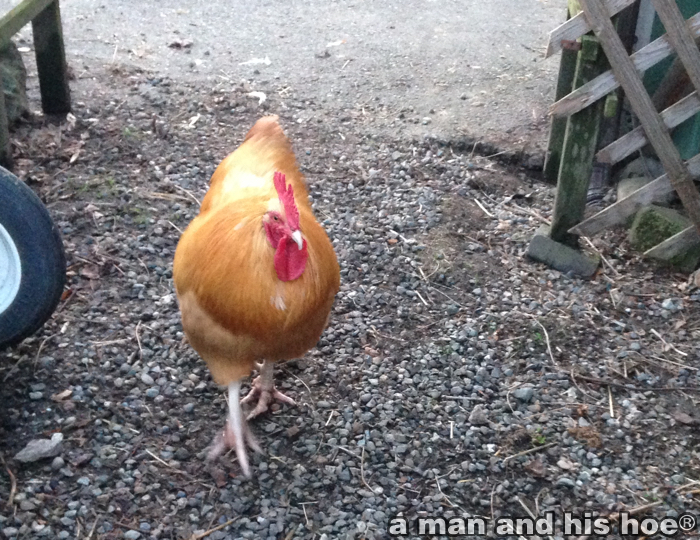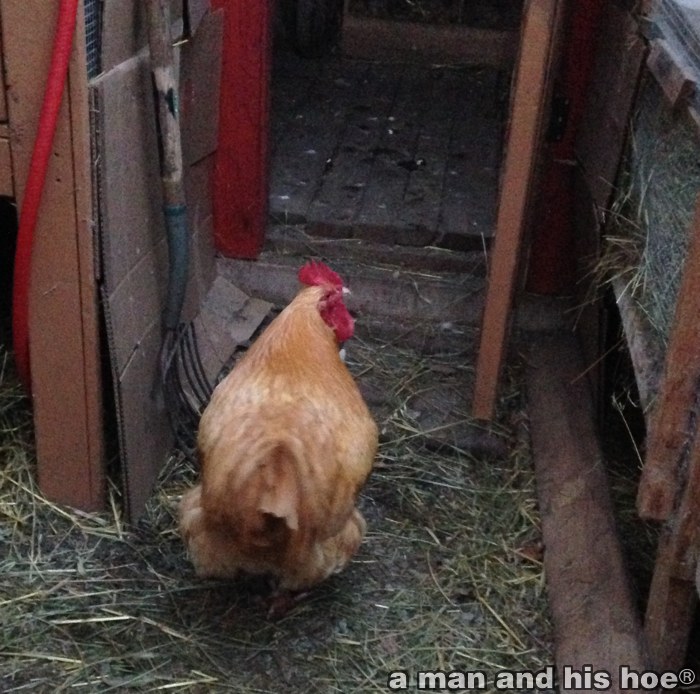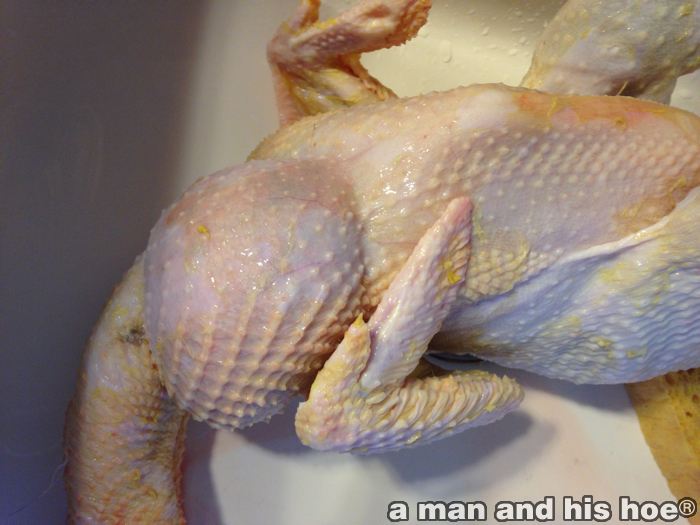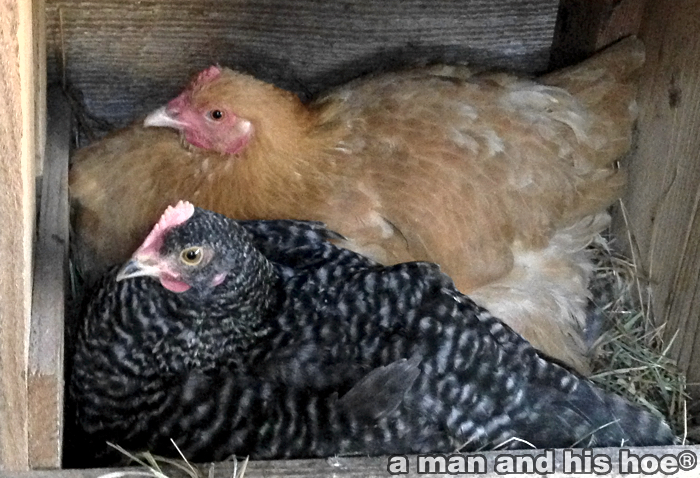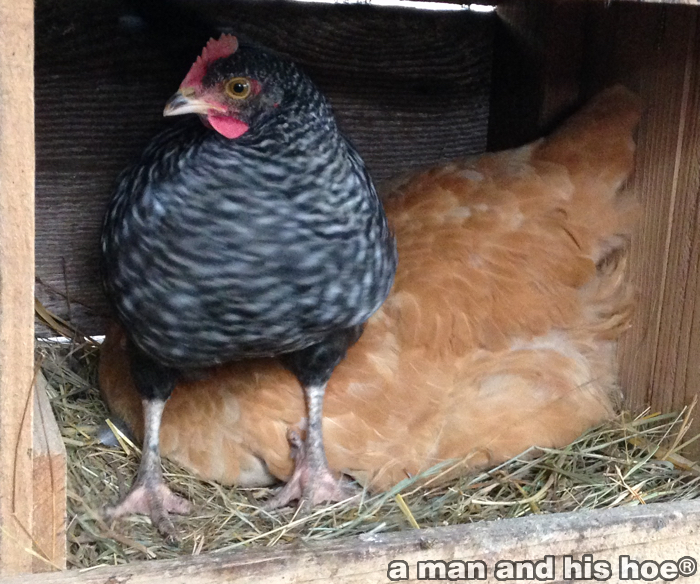
Some of the chickens, Lucky especially, aren’t as shy as I am. If she wants something, she doesn’t hesitate to ask. This afternoon, she wanted her supper hand carried to her. After raising a clutch of well adjusted chicks this fall, she deserves special treatment.
Each chicken’s comb is as unique as a fingerprint. If you look at Lucky’s comb, you’ll see one tooth with two points that sticks out further than the others. There is an infinite variety of combs. Some have many teeth, others just a few. Some flop to the left, some to the right, some are rigid, some are short, and some are flat. There are combs with very deep valleys, tall ones, and short ones. One of the easiest ways to tell chickens apart, is by their combs. When the chickens are in tall grass, and all you can see are their combs, you can still tell who they are by their combs.
Another way to tell them apart is by their voice. Chickens’ voices are as distinct as human voices. Did you know that?
